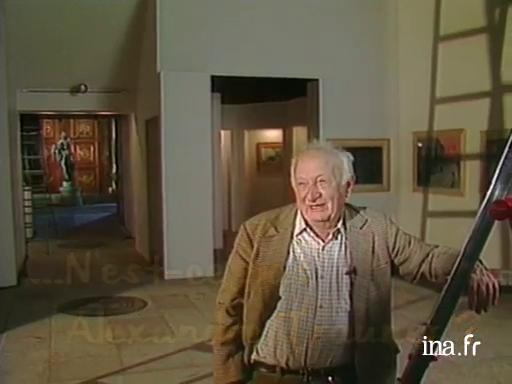Alexandre Trauner, decorator of film sets.

Information
Exhibit covering the career of Alexandre Trauner, creator of film sets for legendary films: Hôtel du Nord, Port of Shadows, Les Portes de la Nuit, Irma la Douce?
- Europe > France > Haute-Normandie > Seine-Maritime
- Europe > France > Ile-de-France > Hauts-de-Seine
- Europe > France > Ile-de-France > Paris
- Europe > Italy
Context
At the end of the 1920s, Alexandre Trauner (1906-1993) left his native Hungary and the anti-semitic persecution of the Horthy regime for France. Ballet decors, wallpaper, photography, fashion, architecture, the future "film designer" gained hands-on experience before becoming chief set designer in 1937.
His friendship with Jacques Prévert, who nicknamed him "Trau", led to his working with "poetic realist" filmmakers, especially with Marcel Carné and Jean Grémillon, whom Prévert wrote for. Trauner was responsible for the sets of Port of Shadows (1938), Hôtel du Nord (id.), Daybreak (1939), The Devil's Envoys (1942), Children of Paradise (1943)...
His talent opened the doors to Hollywood, where he worked until 1974 with the biggest names, Orson Welles, Billy Wilder (he won the Oscar for best art direction for The Apartment), Jules Dassin, Stanley Donen, Howard Hawks and even John Huston. The exhibit "Alexandre Trauner 50 years of cinema", presented for the first time in 1986 at the Beaux-Arts school in Paris, on the occasion of the fiftieth anniversary of the French Cinémathèque, is still in circulation and contains 180 pieces, models, paintings and drawings.




